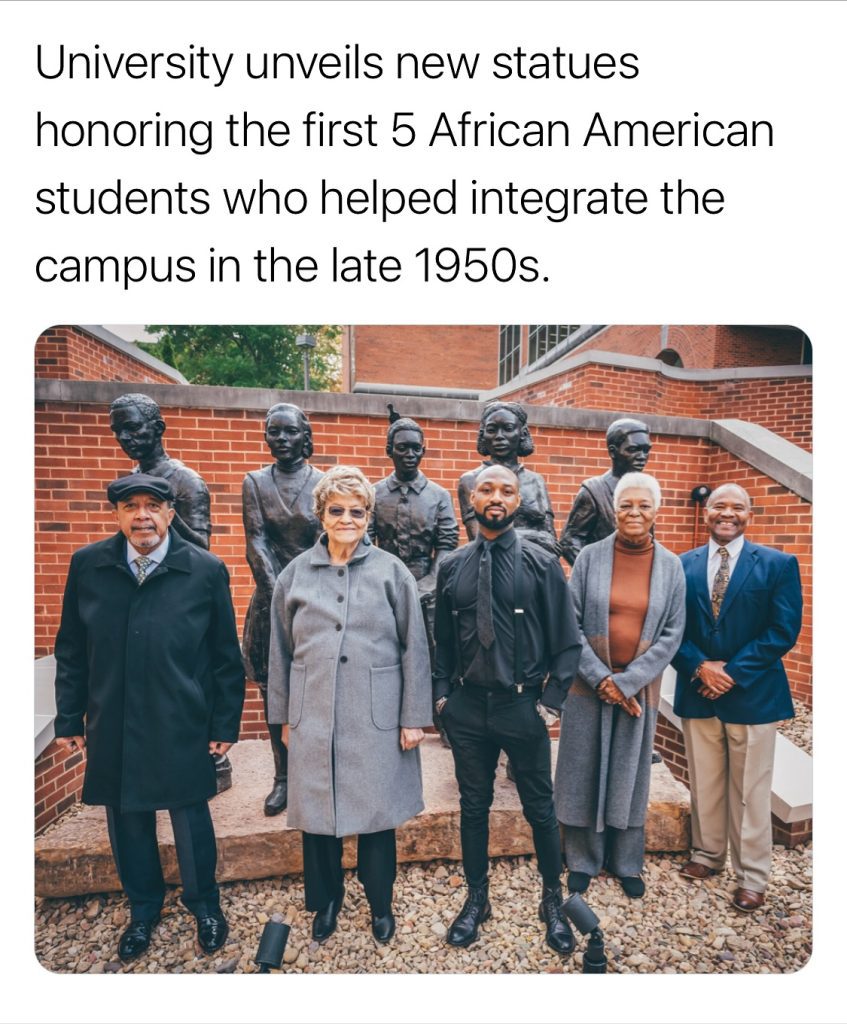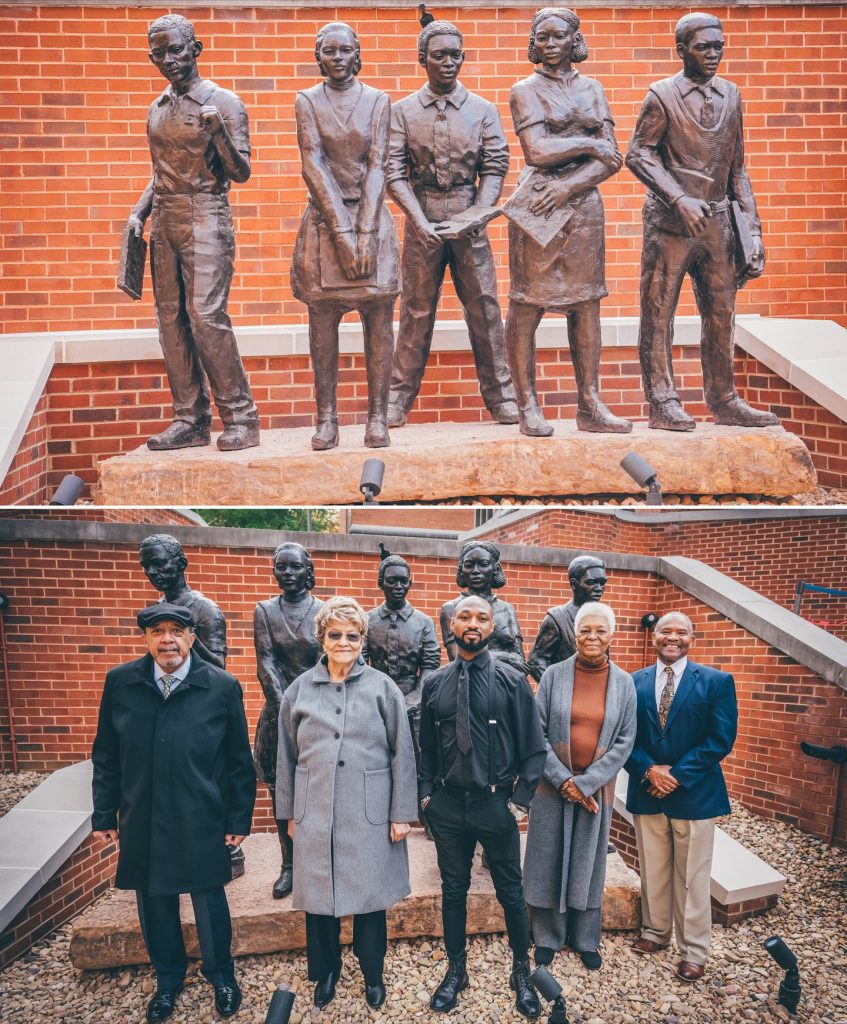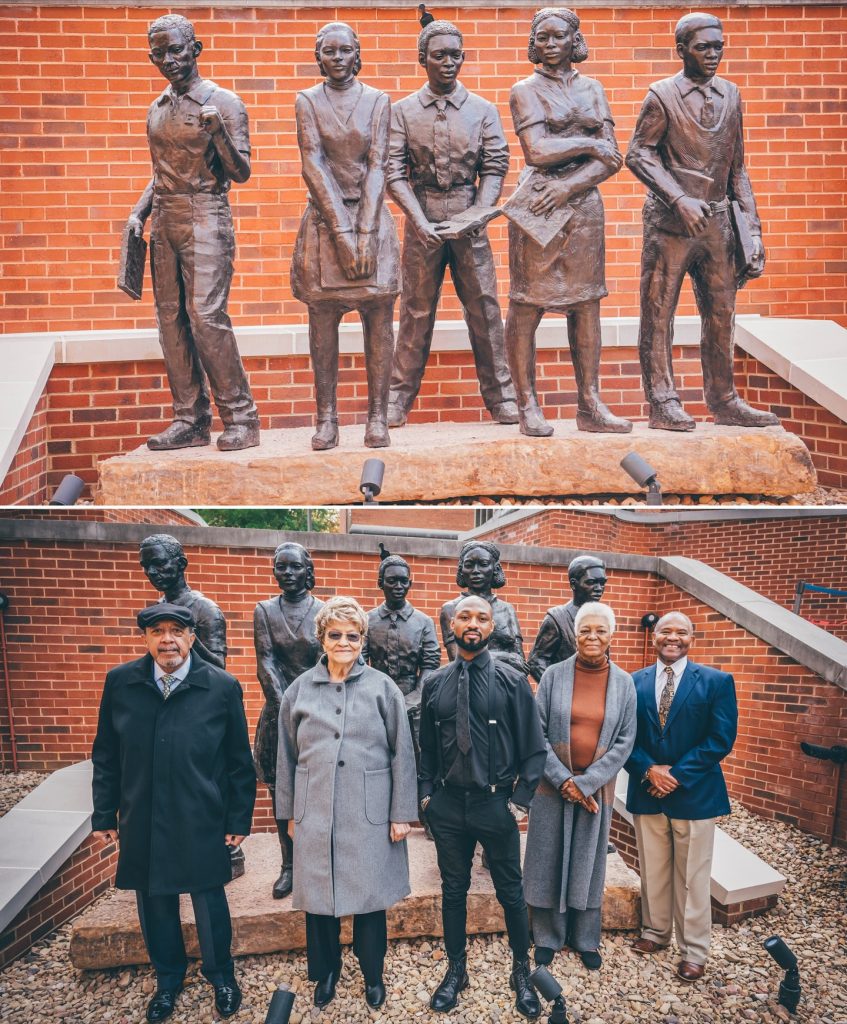University Unveils Statues Honoring the First 5 African American Students Who Integrated the Campus in the Late 1950s — A Tribute to Courage and Change
At East Tennessee State University, a moment of history came full circle. On a crisp morning, faculty, alumni, and students gathered together to honor the five African American pioneers who, over six decades ago, walked onto campus for the first time and changed it forever. Standing tall in front of a red-brick building are now five bronze statues — lifelike, powerful, and timeless — representing Eugene Caruthers, Elizabeth Crawford, George Nichols, Mary Luellen Wagner, and Clarence McKinney. These were the individuals whose bravery quietly dismantled barriers and helped build the foundation for a more inclusive university community.

In the late 1950s, the idea of integration was met with resistance across much of the South. But at East Tennessee State University, five young students took a courageous step forward. They weren’t activists by title, yet their actions carried the same strength as those marching for civil rights across the nation. They were students who simply wanted an education — and in the process, they became symbols of change. Their presence on campus was a statement in itself, one that required composure, patience, and unshakable dignity during a time of social tension and transformation.
Now, more than 60 years later, their legacy is carved in bronze. The sculptures, created by artist Austen Brantley, stand as both a visual reminder and a spiritual message. Each figure reflects resilience, courage, and hope — qualities that defined these trailblazers as they navigated an unfamiliar and often unwelcoming environment. Brantley’s work captures more than likeness; it captures emotion. The quiet pride in their stance and the gentle power in their expressions serve as a conversation between past and present, one that reminds visitors of the sacrifices made for progress.

During the unveiling ceremony, current students and community members reflected on what the statues represent. For many, it was more than just a tribute — it was a homecoming of gratitude. People spoke about how these five individuals didn’t just integrate classrooms; they opened doors for thousands of others who would follow. Their bravery turned isolation into opportunity, and their presence proved that education belongs to everyone, regardless of color or background.
University leaders emphasized that the installation is not just about looking back, but also about moving forward. It’s a commitment to telling the whole story — one that acknowledges the struggles of the past while striving toward a more equitable future. The symbolism of the statues extends beyond the campus, echoing across generations as a reminder that progress requires courage, and change often begins with a few who dare to take the first step.
Family members of the honorees stood among the crowd, their emotions visible as they looked up at the statues. Some had tears in their eyes, others smiled softly, proud to see that the sacrifices of their loved ones had not been forgotten. It was a moment that felt both historic and deeply personal — a bridge connecting memory with recognition.
For the university community, this unveiling is more than a monument; it’s an active promise to keep the spirit of inclusion alive. Students who walk past these statues every day will see not only the faces of those who came before them but also the possibilities that courage creates. These five pioneers may have entered campus quietly in the 1950s, but their legacy now speaks louder than ever.
Through art, remembrance, and gratitude, East Tennessee State University has turned a painful chapter of history into a powerful lesson in resilience and unity. The statues stand as living symbols of strength and proof that even the smallest acts of bravery can echo through generations.



